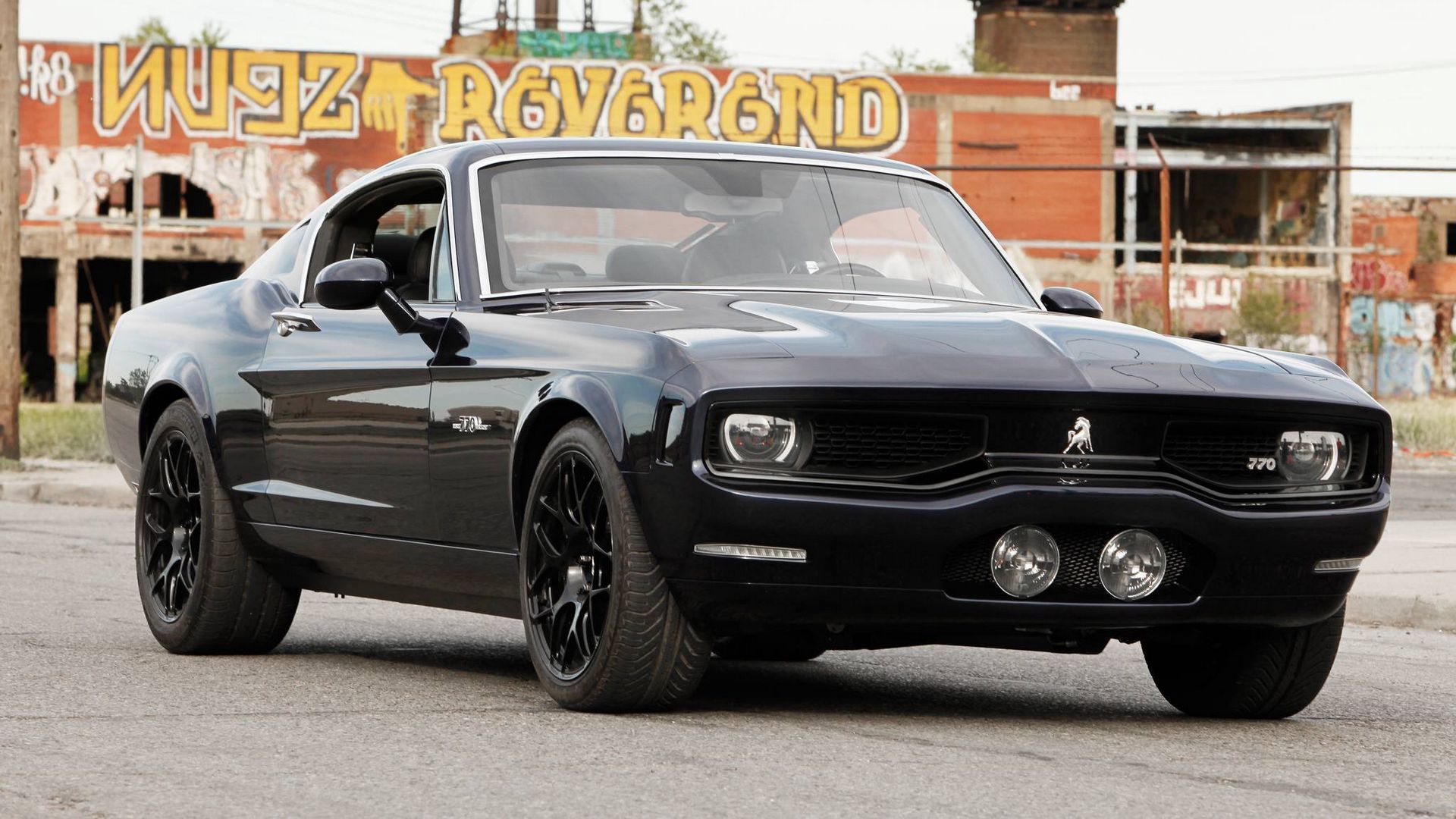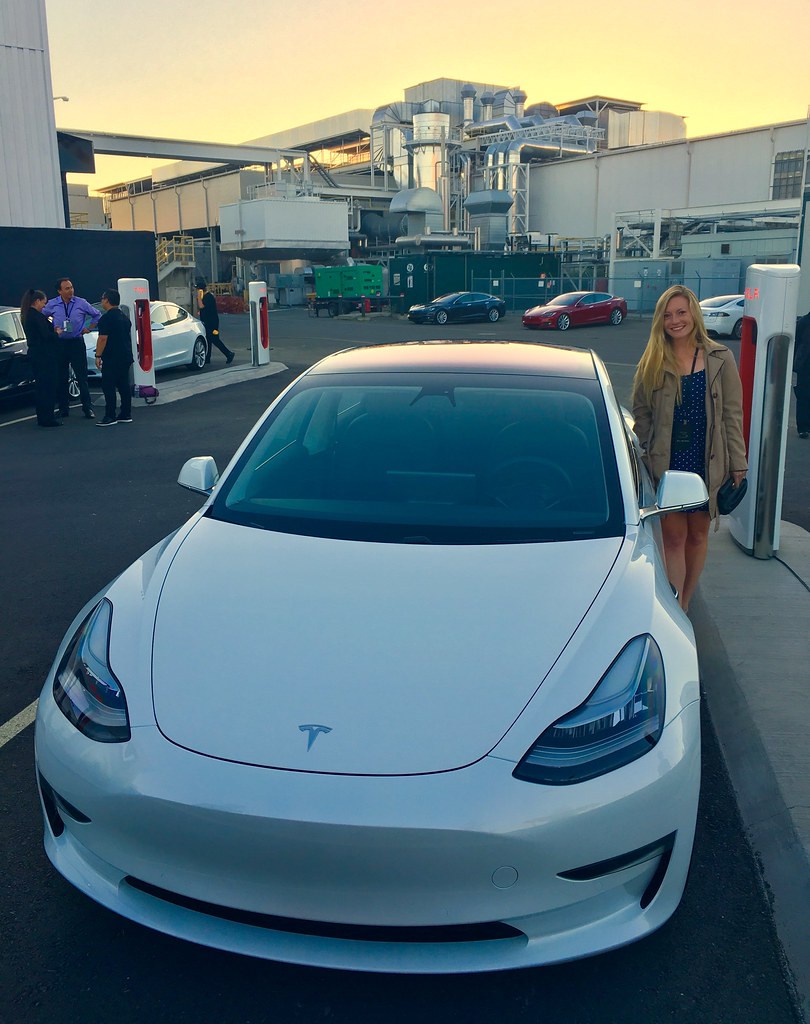
The world of automobiles isn’t just about gleaming chrome and roaring engines; it’s a dynamic arena where ambition, innovation, and fierce competition drive relentless progress. For over a century, carmakers have locked horns in battles that, while sometimes acrimonious, have consistently pushed the boundaries of what’s possible on four wheels. These clashes of engineering, design, and marketing genius have often resulted in groundbreaking advancements that benefit drivers worldwide.
Whenever two automotive titans go head-to-head, the real beneficiaries are frequently the consumers, as manufacturers strive to outdo each other in technology, performance, and overall driver experience. From the sleek lines of supercars to the rugged capability of off-roaders and the quiet hum of electric vehicles, countless innovations have emerged directly from these intense rivalries. It’s a testament to the power of competition, proving that a little animosity can lead to incredible feats of automotive engineering.
Join us as we embark on a thrilling journey through some of the most legendary automotive feuds, uncovering how these epic standoffs not only fueled personal grudges but also fundamentally reshaped the cars we drive today. We’ll explore the pivotal moments where competition wasn’t just about sales figures, but about leaving an indelible mark on automotive history.

1. **Lamborghini vs. Ferrari Turned Supercars into Art**The genesis of the legendary rivalry between Lamborghini and Ferrari is a story as dramatic as any supercar’s performance. It began not on a racetrack, but with a personal spat in the 1960s. Ferruccio Lamborghini, a successful tractor manufacturer, reportedly decided to build his own supercar after a rather unpleasant interaction with Enzo Ferrari himself, who, upon a complaint about his car’s clutch, dismissed Lamborghini and told him to stick to his own profession. This perceived insult sparked a personal goal for Lamborghini: to create a vehicle that would outperform Ferrari’s.
This bold ambition quickly reshaped the supercar landscape. With the release of the Lamborghini 350 GT in 1964, and the subsequent movement of key employees between the two companies, the rivalry was cemented for life. Ferrari, with its strong racing pedigree, found itself challenged to maintain its edge, which in turn pushed Lamborghini to distinguish itself through audacious design and “outrageous performance,” as mentioned by Gran Turismo Events. This ongoing battle propelled both brands to innovate relentlessly.
Models like Lamborghini’s Miura, Countach, and Aventador didn’t just set new benchmarks; they forced Ferrari to respond with its own iconic vehicles, such as the 288 GTO and F40. The relentless pursuit of speed, distinctive style, and exclusivity by both companies has been a powerful catalyst for advancements in aerodynamics, materials science, and engine technology. It’s a cycle of competition that continually raises the bar for what a high-performance vehicle can achieve.
Ultimately, this fierce competition between the “raging bull” and the “prancing horse” elevated supercars beyond mere machines of speed, transforming them into “rolling works of art.” Admirers appreciate them not only for their breathtaking performance but also for their stunning aesthetic appeal, a direct legacy of two men’s personal feud evolving into an industry-defining contest of excellence.
Read more about: Buckle Up! These Are the 10 Most Absolutely Rad American Car Names of All Time That Still Give Us Chills!
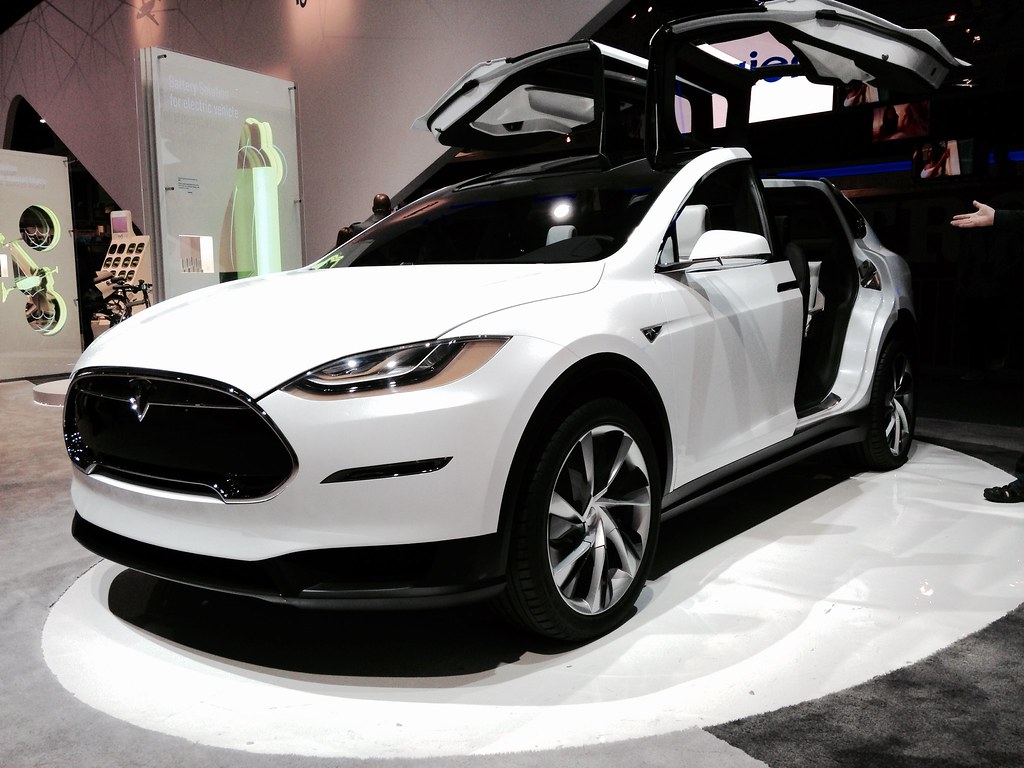
2. **Tesla vs. Legacy Automakers Supercharged the Electric Revolution**When Tesla Motors burst onto the automotive scene, it was more than just a new car company; it was a disruptor with a radical vision for the future of transportation. Elon Musk’s audacious push for electric vehicles (EVs) fundamentally challenged traditional automakers, forcing established brands to pay attention and, crucially, to accelerate their own electric vehicle programs. This marked the beginning of a new kind of rivalry, one centered on innovation in range, charging speed, and autonomous driving features.
Tesla’s approach introduced a host of new benchmarks, from its minimalist interiors and rapid acceleration to its innovative over-the-air updates. These advancements compelled industry giants like Volkswagen, Ford, and GM to invest significantly in developing their own electric platforms and sophisticated battery technologies. The competition became a high-stakes race to develop more appealing and accessible electric cars for the mainstream market.
The fierce competition unleashed by Tesla has been a key driver behind a wave of unprecedented innovation across the entire automotive sector. Manufacturers are now racing to offer more diverse EV choices, enhance battery performance, and improve charging infrastructure. This rapid evolution is making electric vehicles more attractive and practical for a wider array of consumers than ever before.
As a direct consequence of this intense rivalry, the transition to electric mobility is unfolding at a pace far quicker than most experts had anticipated. Consumers are unequivocally reaping the rewards, benefiting from an expanding selection of electric vehicles and a constant stream of technological improvements, all spurred by the competitive energy between Tesla and the traditional automotive establishment.
Read more about: Buckle Up! These Are the 10 Most Absolutely Rad American Car Names of All Time That Still Give Us Chills!
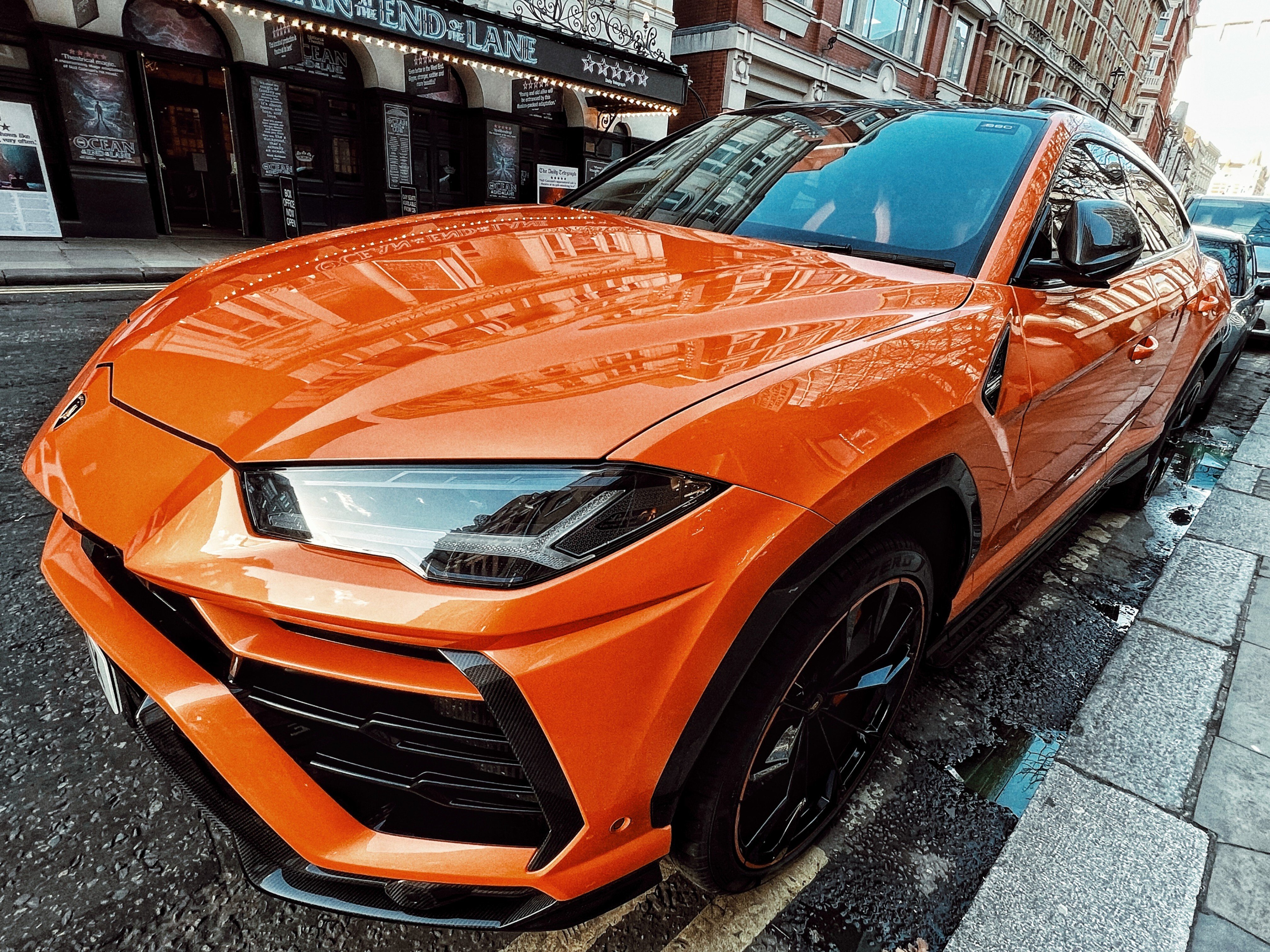
3. **Chevrolet vs. Ford Fueled the American Muscle Car Boom**Few rivalries in American automotive history are as deeply entrenched and iconic as that between Chevrolet and Ford, especially when it comes to the legendary muscle car era. The sparks flew in 1964 with the highly anticipated debut of the Ford Mustang, a car that sent shockwaves through the industry and quickly became a cultural phenomenon. Not one to be outdone, Chevrolet responded swiftly, launching its own formidable contender, the Camaro, in 1966. This ignited an unparalleled horsepower war that would define a generation of performance vehicles.
The ensuing battle was a relentless race to pack more and more power under the hood of these machines. Both brands pushed each other towards significant innovations, leading to the adoption of advanced technologies such as fuel injection, turbocharging, and sophisticated suspension systems. This meant that the rivalry wasn’t solely about sheer straight-line speed; it also drove crucial improvements in handling dynamics, braking performance, and even the everyday drivability of these powerful cars.
Consequently, muscle cars evolved beyond their initial identity as mere “quarter-mile kings.” They transformed into more well-rounded performers, capable of delivering exhilarating speed while also offering a more refined and controlled experience. This continuous push for superiority ensured that each new model year brought fresh advancements and capabilities to the market.
For generations of “gearheads,” the enduring “Camaro vs. Mustang feud” has served as a profound source of inspiration. It stands as a powerful testament to how intense competition can be a potent catalyst, not only for engineering excellence but also for keeping the vibrant and passionate spirit of the American muscle car very much alive and roaring today.
Car Model Information: 2008 Ford Mustang GT Premium
Name: Ford Mustang
Caption: 2018 Ford Mustang GT 5.0
Aka: Ford T5 (Germany)
Manufacturer: Ford Motor Company
Production: March 1964 – present
ModelYears: 1965–present
Class: Unbulleted list
BodyStyle: Unbulleted list
Layout: Front-engine, rear-wheel-drive layout
Categories: 1970s cars, 1980s cars, 1990s cars, 2+2 coupés, 2000s cars
Summary: The Ford Mustang is an American automobile manufactured and marketed by Ford since 1964, as Ford’s longest nameplate in continuous production. Currently in its seventh generation, it is the fifth-best selling Ford car nameplate. The namesake of the “pony car” automobile segment, the Mustang was developed as a highly styled line of sporty coupes and convertibles derived from existing model lines, initially distinguished by its pronounced “long hood, short deck” proportions.
Originally predicted to sell 100,000 vehicles yearly, the 1965 Mustang became the most successful vehicle launch since the 1927 Model A. Introduced on April 17, 1964 (16 days after the Plymouth Barracuda), over 400,000 units were sold in its first year; the one-millionth Mustang was sold within two years of its launch. In August 2018, Ford produced the 10-millionth Mustang; matching the first 1965 Mustang, the vehicle was a 2019 Wimbledon White convertible with a V8 engine.
The success of the Mustang launch led to multiple competitors from other American manufacturers, including the Chevrolet Camaro and Pontiac Firebird (1967), AMC Javelin (1968), and Dodge Challenger (1970). It also competed with the Plymouth Barracuda, which was launched around the same time. The Mustang also had an effect on designs of coupes worldwide, leading to the marketing of the Toyota Celica and Ford Capri in the United States (the latter, by Lincoln-Mercury). The Mercury Cougar was launched in 1967 as a unique-bodied higher-trim alternative to the Mustang; during the 1970s, it included more features and was marketed as a personal luxury car.
From 1965 until 2004, the Mustang shared chassis commonality with other Ford model lines, staying rear-wheel-drive throughout its production. From 1965 to 1973, the Mustang was derived from the 1960 Ford Falcon compact. From 1974 until 1978, the Mustang (denoted Mustang II) was a longer-wheelbase version of the Ford Pinto. From 1979 until 2004, the Mustang shared its Fox platform chassis with 14 other Ford vehicles (becoming the final one to use the Fox architecture). Since 2005, Ford has produced three generations of the Mustang, each using the D2C platform, unique to the model line.
Through its production, multiple nameplates have been associated with the Ford Mustang series, including GT, Mach 1, Boss 302/429, Cobra (separate from Shelby Cobra), and Bullitt, along with “5.0” fender badging (denoting 4.9 L OHV or 5.0 L DOHC V8 engines).
Get more information about: Ford Mustang
Buying a high-performing used car >>>
Brand: Ford Model: Mustang
Price: $16,785 Mileage: 81,832 mi.
Read more about: Beyond the Hype: 14 Classic Cars That Haven’t Held Their Value in Today’s Market

4. **Audi vs. BMW in the Battle for Tech-Savvy Drivers**The competition between Audi and BMW has escalated into a sustained “high-tech arms race” over many years, with each German luxury marque striving to outshine the other in integrating the latest technological advancements and driver assistance systems. Audi notably set a new standard early on with its pioneering adoption of all-wheel drive and fully digital displays, a move that prompted BMW to respond with its own sophisticated infotainment systems and a suite of advanced driver-assist features, as carefully observed by Motor Trend.
This relentless technological rivalry has directly fueled an incredibly rapid evolution within the automotive industry. Drivers have benefited from a constant stream of innovations, ranging from the immersive experience of “virtual cockpits” to the convenience and safety offered by increasingly capable semi-autonomous driving capabilities. Both brands are now committed to delivering vehicles that are not merely luxurious, but also packed with cutting-edge connectivity, advanced safety measures, and extensive entertainment options.
The ultimate outcome of this competitive spirit is a significantly enhanced and more convenient driving experience for consumers. Cars from both Audi and BMW are designed to be intuitive, responsive, and seamlessly integrated with modern digital lifestyles, transforming the cabin into a hub of technology and comfort.
This rivalry powerfully demonstrates that innovation in the automotive sector extends far beyond traditional metrics of speed or brute power. Audi and BMW have consistently proven that making cars “smarter, safer, and more fun to live with” is a highly exciting and equally important frontier for engineering excellence, continuously redefining what drivers expect from their luxury vehicles.

5. **Land Rover vs. Jeep Defined Off-Road Capability**The battle for supremacy in off-road capability has been fiercely contested between Land Rover and Jeep since the aftermath of World War II. Jeep, with its origins rooted in wartime utility and a reputation for rugged simplicity and a “go-anywhere attitude,” initially set the benchmark for robust, utilitarian vehicles. This distinct approach, however, pushed Land Rover to carve out its own niche by expertly blending luxurious comfort with formidable off-road prowess, creating vehicles that were capable of conquering the most challenging terrains while doing so in undeniable style.
Both brands have played pivotal roles in pioneering significant advancements in off-road technology. Their competition led to the introduction of sophisticated “advanced four-wheel-drive systems,” innovative “terrain response controls,” and highly “durable suspension setups.” These engineering breakthroughs became the gold standard for what a true off-roader should embody, influencing countless other manufacturers and captivating a vast community of enthusiasts globally.
The ongoing rivalry has consistently raised the bar for what consumers can expect from an off-road vehicle. It has inspired a continuous drive for improvement, resulting in vehicles that offer an exceptional balance between rugged utility and refined road manners. This means that whether drivers are navigating urban streets or tackling remote trails, their vehicles are engineered for optimal performance in diverse conditions.
Thanks to this enduring push for off-road excellence, “adventurers and weekend warriors alike now benefit from vehicles that are as comfortable on the highway as they are on the trail.” This symbiotic competition has guaranteed that the market for capable, versatile, and increasingly luxurious off-road vehicles remains vibrant and constantly evolving, offering unparalleled freedom to explore.
Read more about: The Truck Buyer’s Almanac: 12 Pickups Poised for Major Price Drops on Dealer Lots
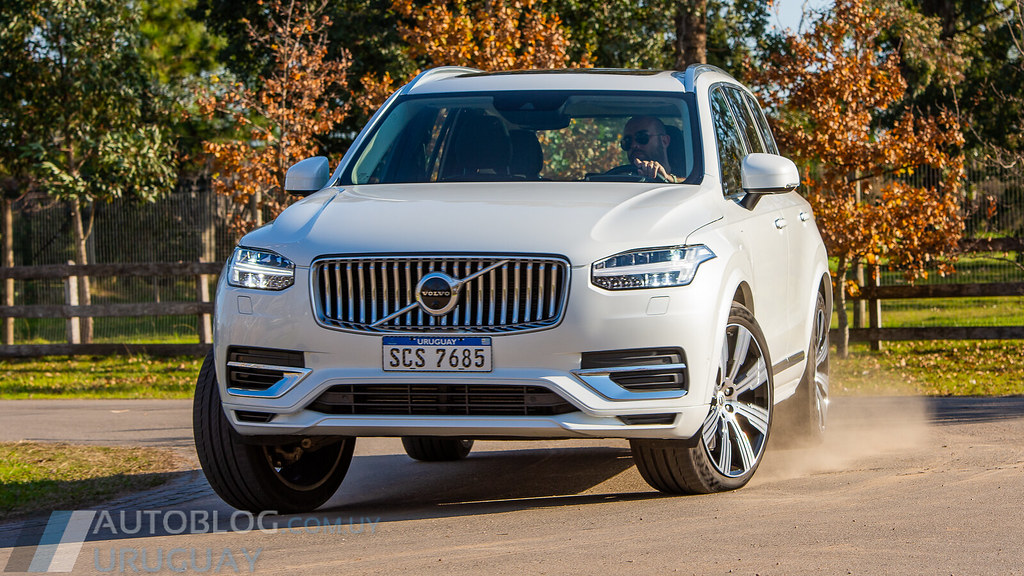
6. **Volvo vs. Saab Put Safety at Center Stage**In the annals of automotive history, the rivalry between Sweden’s two most prominent carmakers, Volvo and Saab, stands out for its unique focus: the relentless pursuit of automotive safety. For decades, these two brands competed fiercely, not just for market share, but to build the safest cars available on the road. Volvo’s foundational emphasis on “crash protection and seatbelt technology” was a constant challenge, compelling Saab to innovate with its own groundbreaking safety features, such as “side-impact protection” and “turbocharged engines that didn’t compromise safety,” as vividly detailed by Car Magazine.
This intense, safety-centric competition between Volvo and Saab led to a remarkable series of “industry firsts.” Many innovations that are now commonplace and standard across the global automotive landscape, from crumple zones designed to absorb impact energy to revolutionary side airbags, can trace their origins back to the pioneering efforts of these two Swedish rivals. Their commitment to occupant protection reshaped automotive design and engineering worldwide.
Beyond passive safety features, both brands also distinguished themselves by pioneering the development of highly ergonomic interiors. This focus on human-centered design ensured that cars were not only safer in the event of an accident but also more comfortable and intuitive for drivers and passengers during everyday use. The thoughtful layout and functionality contributed significantly to reducing driver fatigue and increasing overall awareness.
The indelible legacy of this rivalry is evident today, as “safety innovations that began with these two brands now benefit drivers everywhere.” Their decades of competition underscore the profound and lasting influence that focused, ethical rivalry can have on global standards, proving that the drive for safety can be as potent a catalyst for innovation as the quest for speed or luxury.
Read more about: Unleashing the Boost: A Deep Dive into the Pioneering Turbocharged Oldsmobile Jetfire and Chevrolet Corvair
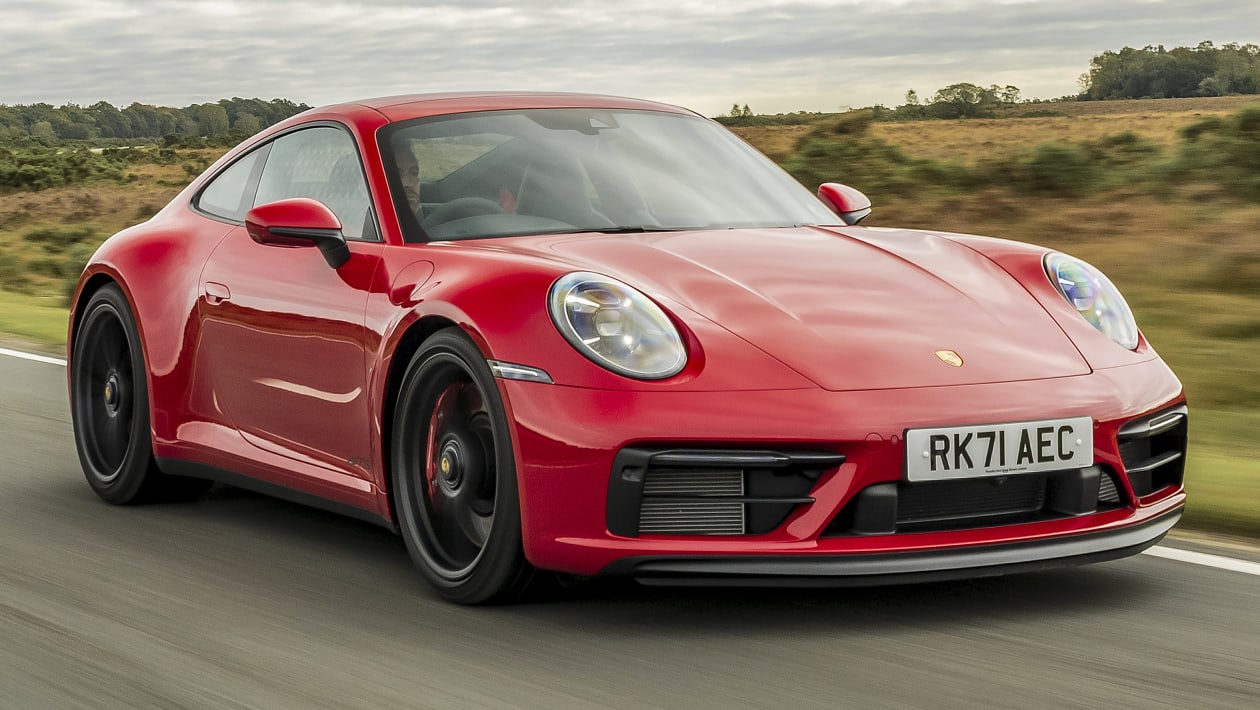
7. **Porsche vs. Corvette Proved Sports Cars Could Be Everyday Drivers**When it comes to pure sports car supremacy, few rivalries have captivated enthusiasts quite like the enduring battle between Porsche and Chevrolet’s Corvette. For decades, these two automotive giants have duked it out, each brand carving its own distinct path to performance and recognition. Porsche, with its rich heritage rooted in precision German engineering and meticulous handling dynamics, built a reputation for refined sports cars that offered an unparalleled driving experience.
Conversely, the Corvette championed the quintessential American muscle car ethos, delivering raw power and exhilarating performance at a compelling value. This fundamental divergence in philosophy—European precision versus American brute force and accessibility—pushed both marques to innovate tirelessly. Their ongoing competition has significantly blurred the traditional lines between dedicated track-day machines and practical, thrilling daily drivers, proving that high performance doesn’t have to be confined to the race circuit.
Porsche’s relentless pursuit of balance and refinement continuously led to breakthroughs in chassis dynamics, suspension tuning, and advanced turbocharging technologies. Meanwhile, Corvette consistently pushed the boundaries of engine power and lightweight construction, seeking to extract every last ounce of speed. A clear example of this competitive influence was the introduction of the mid-engine Corvette C8, a radical departure for the brand, which many saw as a direct challenge to the venerable Porsche 911. This bold move underscores how intense rivalries can inspire manufacturers to undertake significant, even revolutionary, design and engineering changes, all in the name of outperforming a competitor.
The constant back-and-forth between these two iconic brands has undeniably made high-performance vehicles more accessible and usable for a wider audience. Drivers who once might have hesitated to own a dedicated sports car now benefit from machines that offer exhilarating thrills on the open road without sacrificing practicality. This vibrant rivalry ensures that the thrill of driving remains within reach for more enthusiasts, inviting more people than ever to experience the joy of a truly engaging sports car.
Car Model Information: 2019 Chevrolet Corvette Stingray
Name: Chevrolet Corvette
Caption: 2021 Chevrolet Corvette C8
Manufacturer: Chevrolet
Production: 1953–present
ModelYears: bulleted list
Assembly: bulleted list
Class: Sports car
BodyStyle: coupé
Layout: Front-engine, rear-wheel-drive layout,Rear mid-engine, rear-wheel-drive layout
Categories: 1950s cars, 1960s cars, 1970s cars, 1980s cars, 1990s cars
Summary: The Chevrolet Corvette is a line of American two-door, two-seater sports cars manufactured and marketed by General Motors under the Chevrolet marque since 1953. Throughout eight generations, indicated sequentially as C1 to C8, the Corvette is noted for its performance, distinctive styling, lightweight fiberglass or composite bodywork, and competitive pricing. The Corvette has had domestic mass-produced two-seater competitors fielded by American Motors, Ford, and Chrysler; it is the only one continuously produced by a United States auto manufacturer. It serves as Chevrolet’s halo car.
In 1953, GM executives accepted a suggestion by Myron Scott, then the assistant director of the Public Relations department, to name the company’s new sports car after the corvette, a small, maneuverable warship. Initially, a relatively modest, lightweight 6‑cylinder convertible, subsequent introductions of V8 engines, competitive chassis innovations, and rear mid-engined layout have gradually moved the Corvette upmarket into the supercar class. In 1963, the second generation was introduced in coupe and convertible styles. The first three Corvette generations (1953–1982) employed body-on-frame construction, and since the C4 generation, introduced in 1983 as an early 1984 model, Corvettes have used GM’s unibody Y‑body platform. All Corvettes used front mid-engine configuration for seven generations, through 2019, and transitioned to a rear mid-engined layout with the C8 generation.
Initially manufactured in Flint, Michigan, and St. Louis, Missouri, the Corvette has been produced in Bowling Green, Kentucky, since 1981, which is also the location of the National Corvette Museum. The Corvette has become widely known as “America’s Sports Car.” Automotive News wrote that after being featured in the early 1960s television show Route 66, “the Corvette became synonymous with freedom and adventure,” ultimately becoming both “the most successful concept car in history and the most popular sports car in history.”
Get more information about: Chevrolet Corvette
Buying a high-performing used car >>>
Brand: Chevrolet Model: Corvette
Price: $47,990 Mileage: 20,872 mi.
Read more about: The Future Is Now: 13 Game-Changing 2026 Car Models That Are Absolutely Worth the Wait
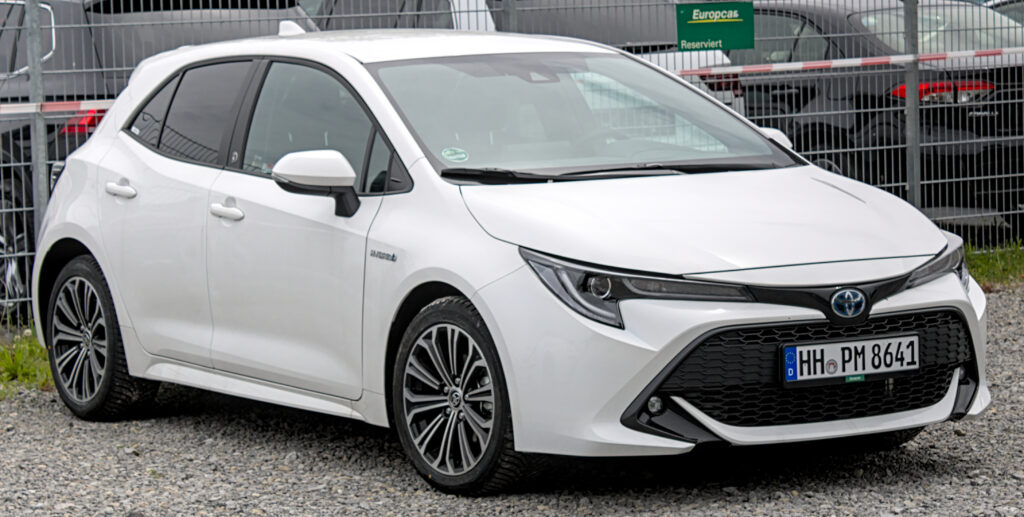
8. **Toyota vs. Honda Drove Everyday Reliability and Efficiency**Not all groundbreaking automotive rivalries are forged in the fires of supercar brawls or muscle car wars. Some of the most impactful competitions unfold quietly, driven by a dedication to everyday excellence that benefits millions of drivers globally. This is precisely the narrative of the long-standing, often understated, rivalry between Japanese titans Toyota and Honda. Their battle has centered on who can consistently build the most reliable, fuel-efficient, and practical cars for the masses, a focus that has yielded immense benefits for daily commuters and families alike.
Toyota’s early and unwavering focus on pioneering quality control measures and optimizing manufacturing efficiency became an industry benchmark. This rigorous approach compelled Honda to respond with its own significant engineering advancements, particularly in areas like engine design and fuel economy. Honda’s VTEC technology, for instance, gave thrill-seekers something to smile about, while Toyota went all-in on hybrid innovation with the Prius, shifting the industry’s green gears. The net result of this back-and-forth was a series of iconic vehicles, such as the Toyota Corolla and Honda Civic, which set new standards for longevity, low running costs, and overall dependability. These cars weren’t just about getting from point A to B; they were about doing so reliably, affordably, and with minimal fuss for hundreds of thousands of miles.
Their shared commitment to constant improvement in these crucial areas has revolutionized the mainstream automotive market. It has elevated consumer expectations for what an affordable vehicle should deliver, making reliability and efficiency non-negotiable standards rather than premium features. The fierce but healthy competition between these two Japanese giants continues to push them to innovate, ensuring that each new generation of vehicles offers incremental yet significant improvements.
Ultimately, millions of drivers across the globe have reaped the rewards of this diligent rivalry. They’ve enjoyed the benefits of affordable, dependable, and increasingly environmentally conscious vehicles. This ongoing dedication to mass-market excellence proves that competition, even without the roar of a V8 or the flash of exotic materials, can be a powerful catalyst for innovation, making everyday driving better for everyone.
Read more about: The Future is Now: 12 Groundbreaking Car Models Set to Redefine Driving in the Coming Years
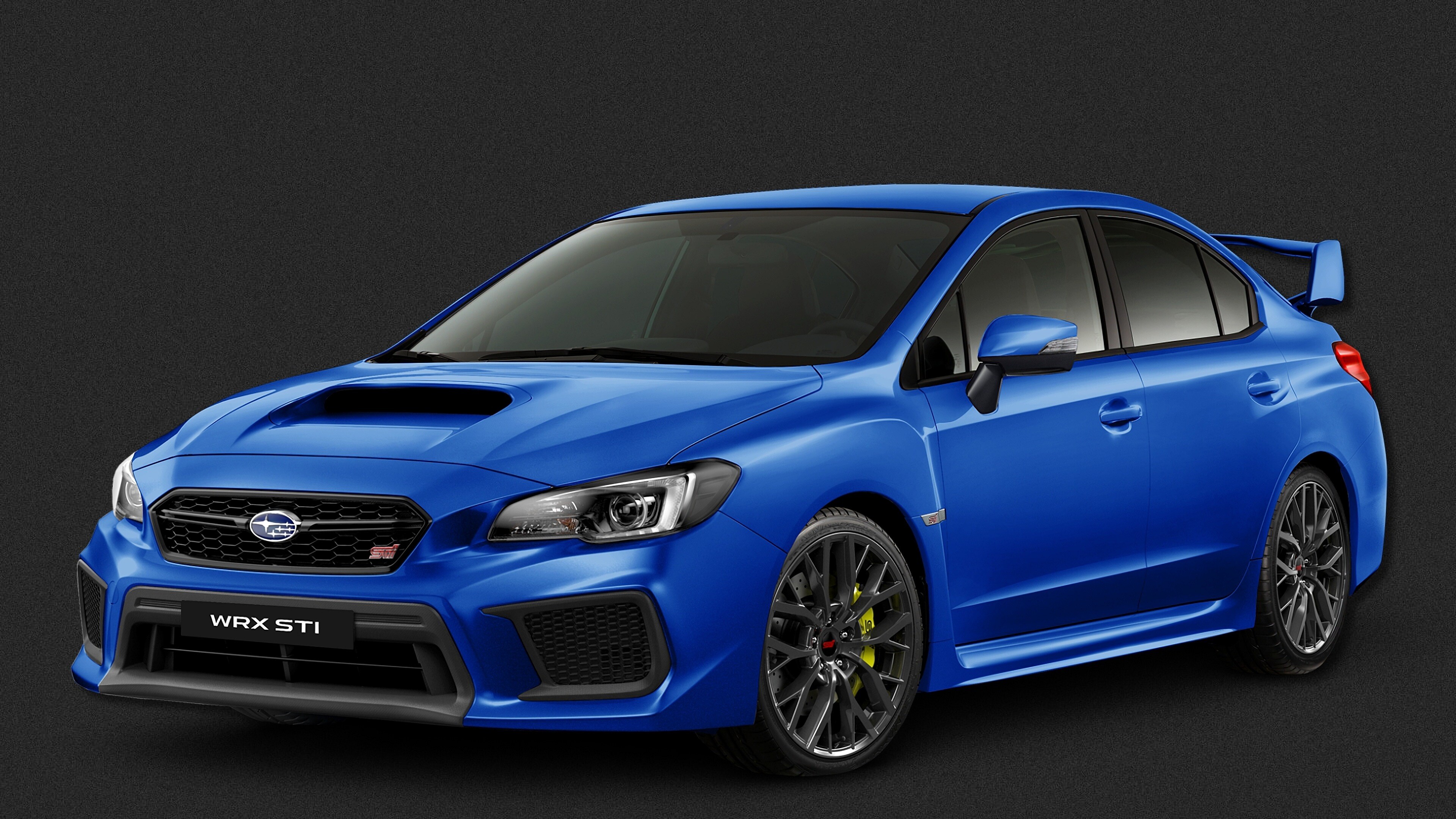
9. **Subaru vs. Mitsubishi Made Rally Tech Mainstream**For a specific breed of car enthusiast, the rivalry between Subaru and Mitsubishi transcends mere brand loyalty; it’s a tribal affiliation, born from the dust and gravel of the World Rally Championship (WRC). This intense competition, particularly prominent in the late 1990s and early 2000s, brought advanced all-wheel-drive systems and potent turbocharged engines out of the elite motorsport arena and directly into everyday production cars, fundamentally changing what drivers expected from affordable performance.
The Subaru Impreza WRX and the Mitsubishi Lancer Evolution—often affectionately referred to as the Evo and the STI—became legendary icons. These vehicles offered rally-bred performance at a price point that made high-speed, all-weather capability accessible to a much broader audience. Their battle on the rally stages, where Mitsubishi edged out Subaru with four WRC titles to Subaru’s three during their peak rivalry, directly translated into a fierce competition in showrooms. Both companies continually refined their drivetrains, chassis, and safety features, using the lessons learned on the world’s toughest rally courses to enhance their road-going machines.
The beauty of this rivalry was its direct impact on consumer vehicles. Rally regulations demanded that manufacturers build production versions of their race cars, leading to what were essentially street-legal rally machines. This meant that what was normally kept to World Rally stages spilled out into the streets, with car enthusiasts being able to buy insanely fast four-door sports cars at bargain prices. Subaru’s symmetrical all-wheel drive battled Mitsubishi’s razor-sharp Active Yaw Control, with neither car ever significantly outperforming the other, but the constant development kept both on the cutting edge.
Their innovations weren’t limited to just sports sedans; they also influenced the development of crossovers and SUVs, demonstrating that a little rally spirit could go a long way in improving traction and handling in diverse conditions. The Mitsubishi Evo III and Subaru Impreza, for example, had eerily similar appearances, with nearly identical rear spoilers, 2-liter engines, and 260+ horsepower, highlighting how closely these rivals shadowed each other’s engineering. Rally-inspired engineering has since become a hallmark of these companies, leaving an indelible mark on automotive performance and technology, particularly for those who crave exhilaration in all conditions.
Read more about: The 12 Most Boring Crossovers in the Market Right Now: What Critics and Performance Specs Reveal for Enthusiasts.
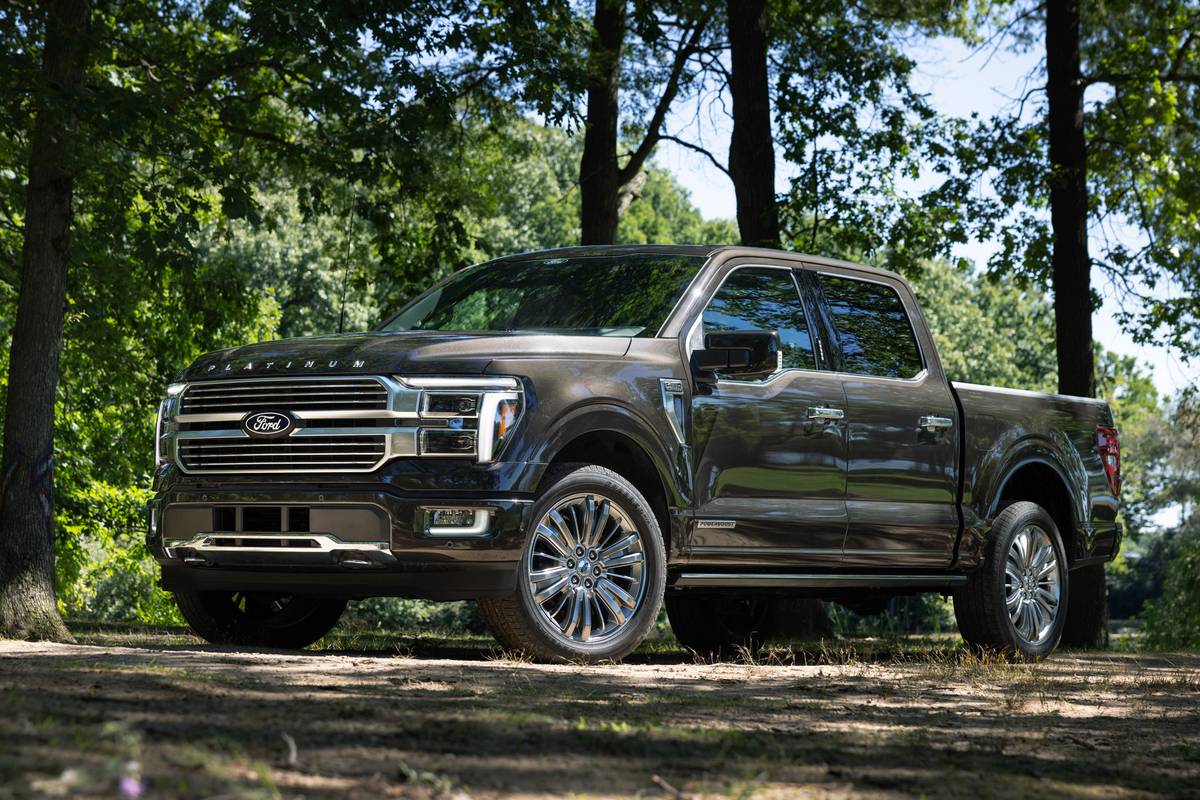
10. **Ford vs. Ferrari Sparked a Race to Engineering Greatness**Few automotive clashes are as steeped in drama, personal animosity, and sheer engineering brilliance as the legendary feud between Ford and Ferrari. This iconic rivalry, vividly portrayed in popular culture, was rooted in the 1960s when Henry Ford II set his sights on a seemingly impossible goal: dethroning Enzo Ferrari at the prestigious 24 Hours of Le Mans. What began with a failed buyout attempt in 1963 quickly escalated into a deeply personal vendetta, fueled by bruised egos and a burning desire for revenge.
After Ferrari famously rebuffed Ford’s offer, insulting Ford’s executives in the process, Henry Ford II poured immense resources into creating a car designed for one singular purpose: to beat Ferrari at their own game on the racetrack. This monumental effort led to the birth of the Ford GT40, a vehicle conceived and engineered to conquer endurance racing. The meticulous collaboration between figures like Carroll Shelby and Ken Miles culminated in Ford’s historic, dominant victories at Le Mans from 1966 to 1969, an unprecedented feat that shocked the motorsport world and cemented the GT40’s legendary status.
This rivalry wasn’t just about winning trophies; it fundamentally pushed both companies to unparalleled levels of innovation. Ford introduced cutting-edge aerodynamics, pioneered lightweight materials, and developed endurance-focused engineering that was revolutionary for its time. In response, Ferrari doubled down on its own engine performance and reliability, refining its formidable V12 powerplants and chassis designs. The GT40’s mid-engine layout, born from the demands of competition, trickled down into future sports car designs, setting new standards for both brands and the entire industry. Enzo Ferrari, a race car driver at heart, decided that his integrity on the track was more important than any financial gain.
As a direct result of this intensely competitive spirit, a wave of technological breakthroughs emerged that profoundly shaped the future of performance cars. Even today, the echoes of this epic rivalry can be seen in the relentless pursuit of speed, precision, and endurance by carmakers worldwide. It stands as a powerful testament to how personal ambition, combined with corporate will, can drive engineering greatness and create indelible moments in automotive history, benefiting enthusiasts with faster, more capable, and more thrilling machines.
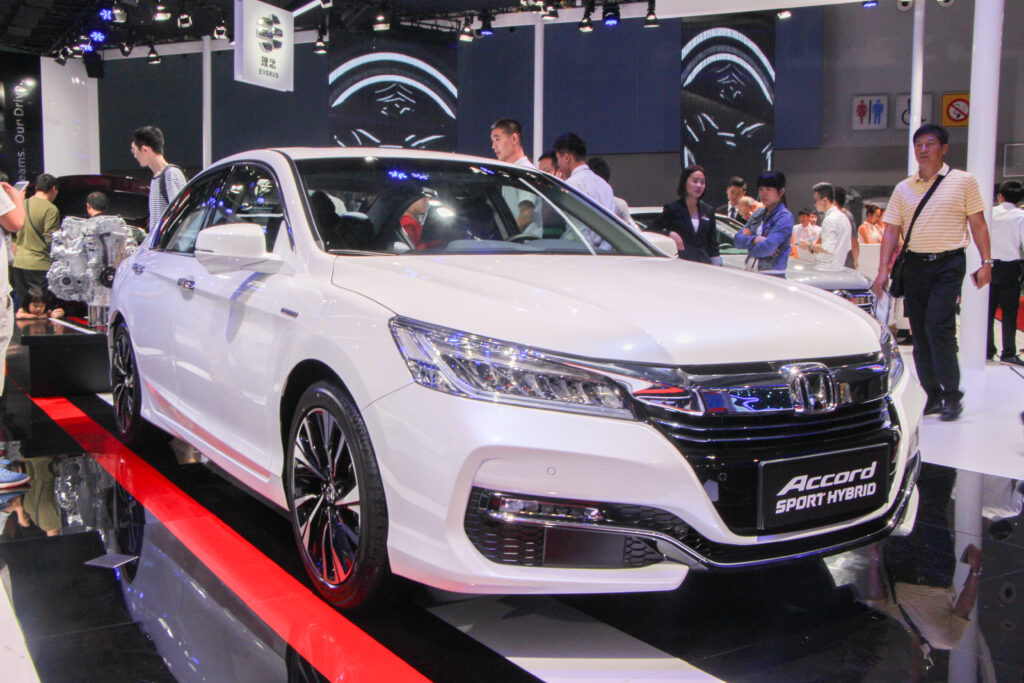
11. **Nissan vs. Toyota in the Quest for Affordable Performance**While Toyota and Honda slugged it out for mainstream reliability, another compelling rivalry unfolded in the realm of performance cars, focusing on making speed and excitement accessible to a broader audience: Nissan versus Toyota. This battle to deliver affordable performance cars to the masses truly heated up during the 1970s and 1980s, producing some of the most beloved and influential Japanese sports cars of all time. Models like the Nissan Z-series (the Datsun 240Z, 280ZX, 300ZX) and the Toyota Supra pushed the boundaries of what a reasonably priced sports car could offer, challenging European counterparts with their blend of performance and value.
Both brands relentlessly experimented with groundbreaking technologies, including turbocharging to boost engine output, lightweight construction techniques to enhance agility, and advanced suspension setups to improve handling dynamics. These innovations were crucial in differentiating their offerings and gaining an edge in the burgeoning performance market. The rivalry inspired an entire wave of Japanese performance cars that went on to become global icons, captivating enthusiasts and tuners who appreciated the blend of cutting-edge technology and affordability. These cars weren’t just fast; they were platforms for personalization and pushed the boundaries of what could be achieved with a modest budget.
Beyond their iconic sports cars, Nissan and Toyota also engaged in a long-standing head-to-head battle in the midsize sedan category. Toyota’s Camry and Nissan’s Altima have gone toe-to-toe for decades, building reputations around reliability and global presence, though Toyota has maintained a stronger market share. At the very top end of Japanese performance, the Nissan GT-R and the Lexus LFA, while distinct, brought immense heat to the exotic Japanese car segment, showcasing the engineering prowess of both conglomerates.
This enduring competition has ensured that affordable, fun-to-drive sports cars continue to thrive in the automotive landscape. It proves definitively that you don’t need a supercar budget to experience the thrill of a blast behind the wheel, or to own a reliable, well-engineered vehicle. The legacy of Nissan and Toyota’s pursuit of affordable performance lives on, continuing to inspire new generations of drivers and demonstrating the pervasive impact of rivalry across all automotive segments.
Read more about: I’m a Mechanic: The 5 Cars I Love to See in My Shop (and the 5 I Warn You to Avoid!)
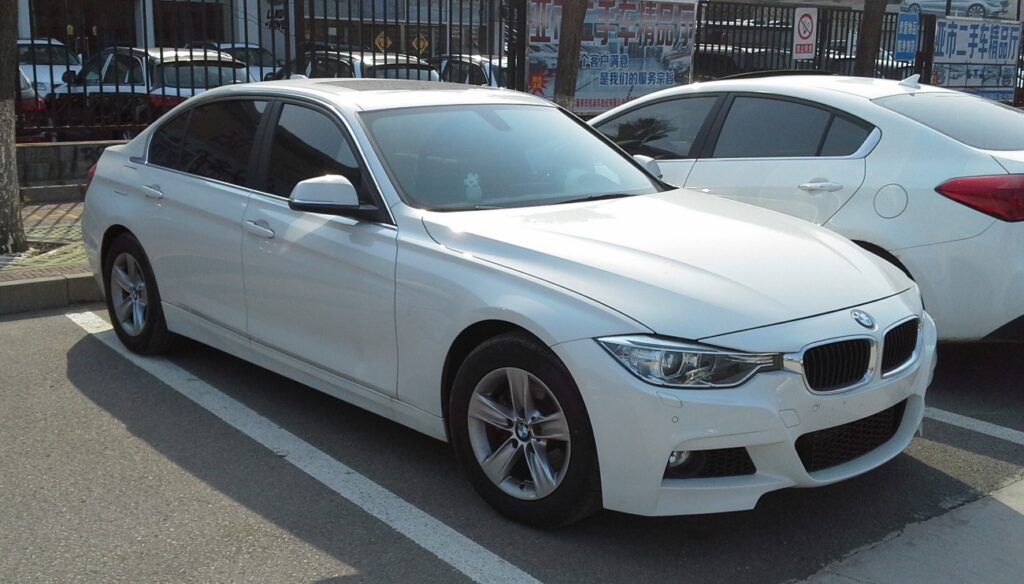
12. **BMW vs. Mercedes-Benz Elevated Luxury and Technology**In the fiercely competitive world of German engineering, no rivalry is more deeply ingrained or continuously evolving than that between BMW and Mercedes-Benz. For decades, these two titans have been locked in a relentless contest, trading jabs across every segment of the luxury automotive market. Each brand boasts an incredibly loyal following, with BMW devotees often touting the brand as “the ultimate driving machine” due to its emphasis on dynamic handling, while Mercedes-Benz loyalists champion its unparalleled comfort, prestige, and pioneering luxury features. This constant one-upmanship has been a powerful catalyst for innovation in luxury, performance, and cutting-edge technology.
BMW’s foundational focus on sporty handling, driver engagement, and innovative inline-six engines consistently forced Mercedes-Benz to elevate its game, responding with increasingly advanced safety features, opulent interiors, and sophisticated ride quality. Conversely, Mercedes’ early adoption of groundbreaking safety technologies, such as anti-lock brakes and airbags, pushed BMW to invest heavily in its own suite of driver-assist technologies and to refine its vehicles’ ride comfort. The result of this symbiotic competition is that both brands now offer an incredible array of vehicles that seamlessly blend thrilling performance with exquisite luxury and state-of-the-art technology, setting industry benchmarks that others strive to emulate.
The rivalry between BMW and Mercedes-Benz extends far beyond the consumer market, profoundly influencing motorsport, the rapid acceleration of electric vehicle development, and even the frontier of autonomous driving. Mercedes-Benz, for instance, made history with the first gas-powered car in 1886, but BMW’s 1928 entry rewrote the script, igniting a rivalry that continues from the entry-level 3 Series vs. C-Class all the way to the high-performance M vs. AMG divisions. This continuous game of strategic chess has ensured that drivers get the best of both worlds: exhilarating performance behind the wheel and the very latest in-car technology and luxurious amenities.
Mercedes has a slight edge in car sales, and its parent company underwent a rebranding in 2022 to Mercedes-Benz AG, highlighting the success of its passenger vehicles. BMW, however, has taken the upper hand in EV production with models like the iX and 740e. Their ongoing competition continues to redefine what drivers expect from luxury automobiles, pushing the boundaries of automotive excellence for the benefit of discerning customers worldwide, making every new model year a testament to their enduring and productive animosity.
**The Enduring Legacy of Automotive Feuds**
The world of automobiles is undeniably a hostile industry, where the pursuit of excellence is often fueled by intense rivalries and, at times, genuine animosity. From the personal spat that sparked the Lamborghini-Ferrari feud to the engineering arms races between German luxury giants and the rally-bred battles of Japanese powerhouses, these confrontations have been the engine of progress. While personal spats between executives might boil over into companywide disputes, the ultimate outcome is clear: the automotive landscape is richer, more innovative, and more exciting because of them.
Read more about: Buyer Beware: These 12 Crossovers Turn into Money Pits Past 80,000 Miles
These fierce showdowns have continuously steered the industry toward new horizons, leading to groundbreaking advancements in design, technology, and performance. Every time two carmakers lock horns, the real winners are the drivers, who benefit from safer, faster, more luxurious, and more efficient vehicles. The stories of these iconic rivalries are not just tales of competition; they are narratives of ambition, innovation, and the relentless drive to create the best cars ever made, leaving an indelible mark on automotive history and shaping the vehicles we cherish today.


